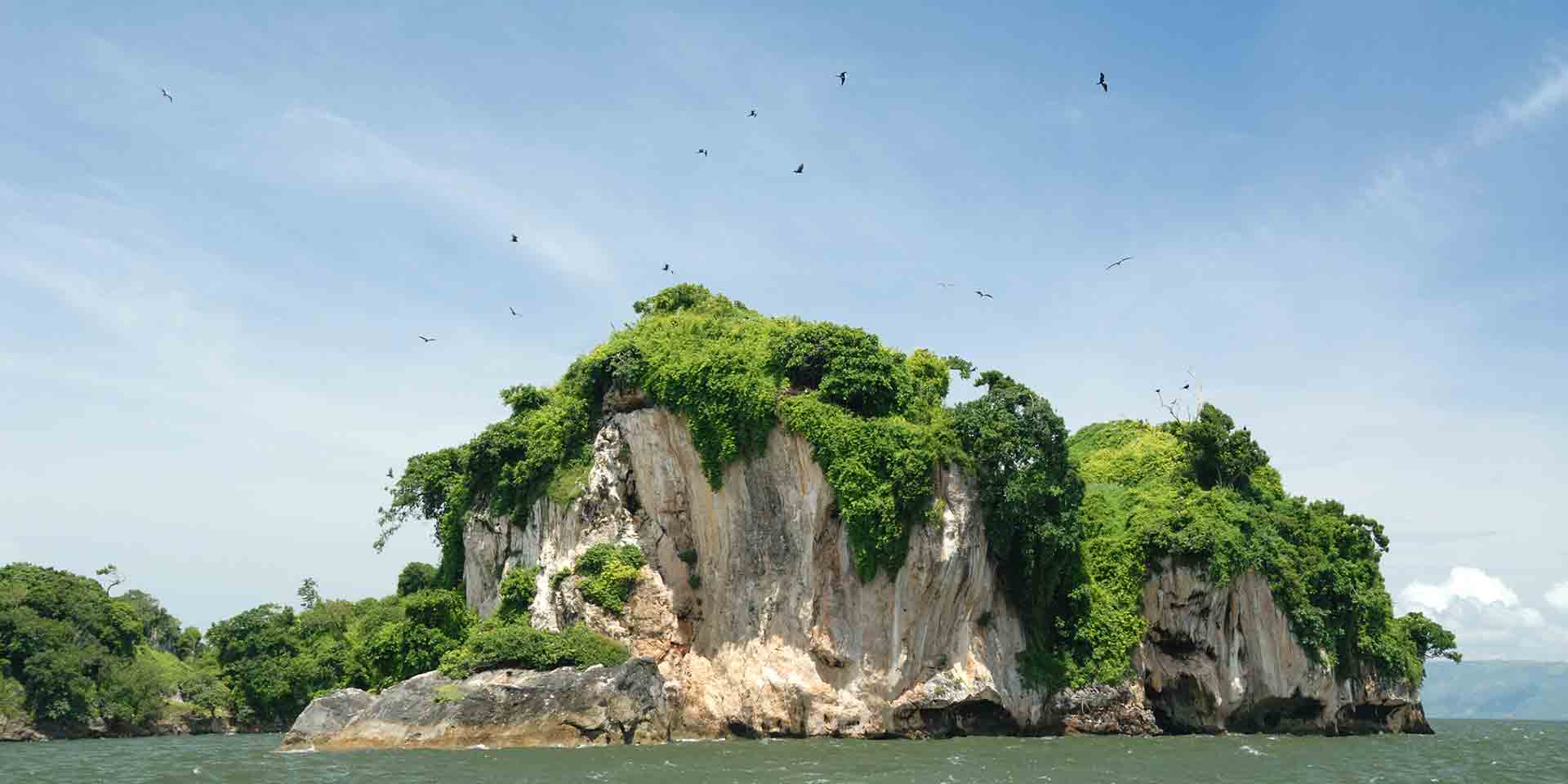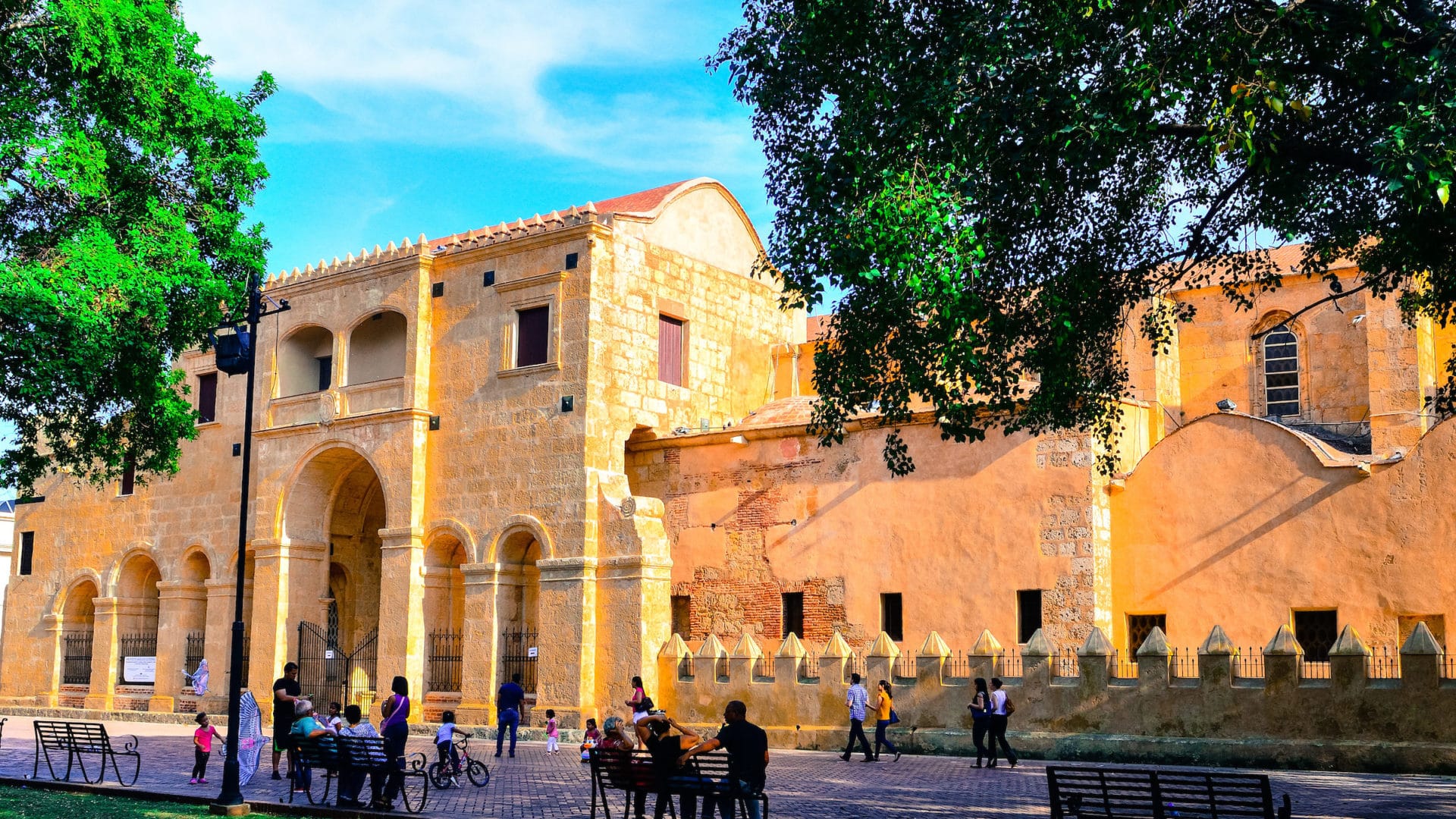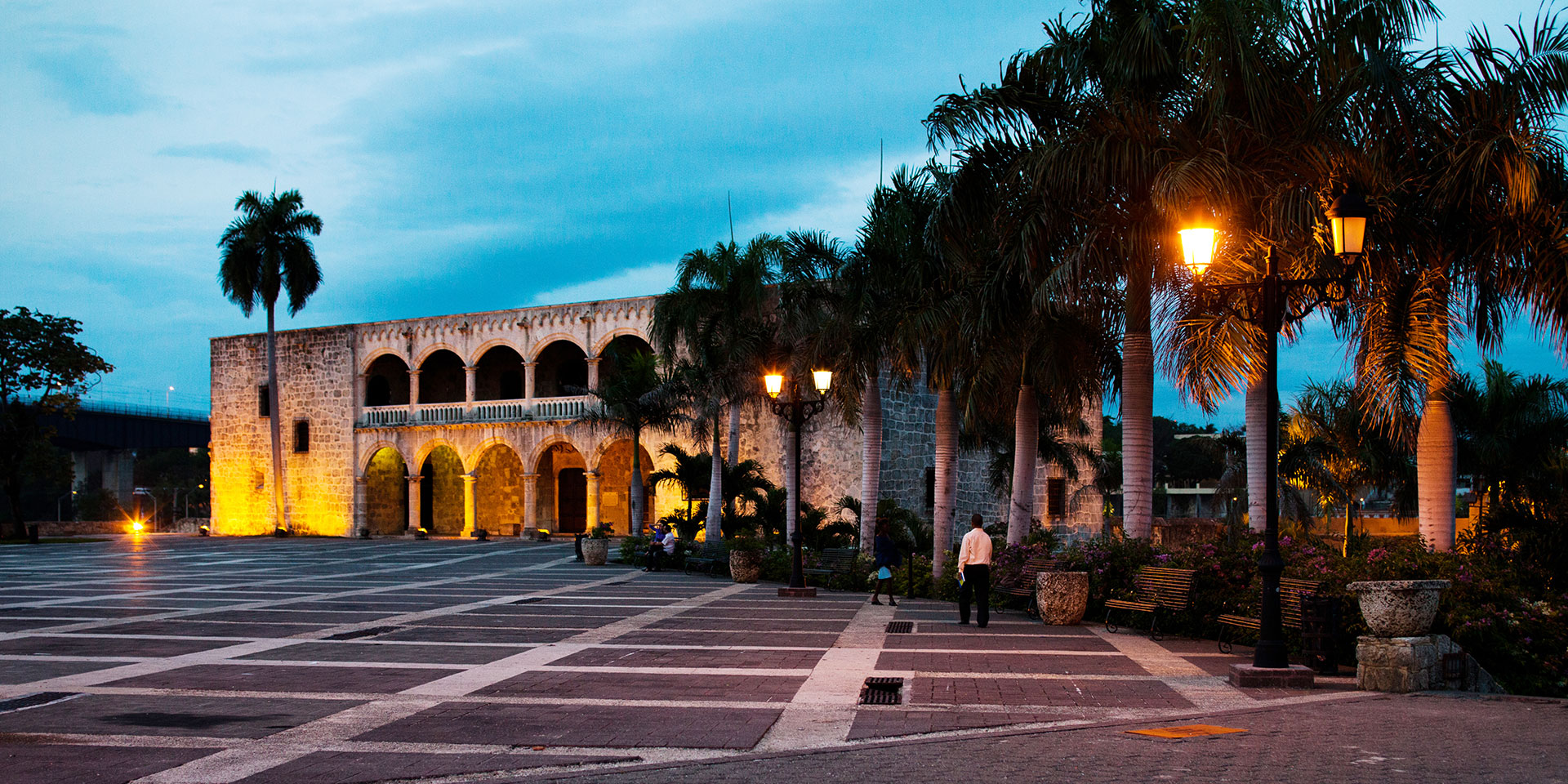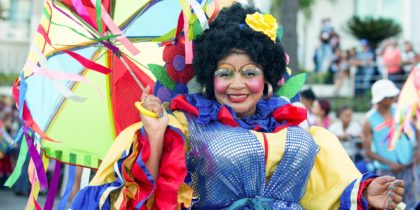The Dominican Republic oozes life. Any day is cause for celebrating and enjoying the outdoors, and Dominicans themselves are among the most gregarious people you’ll meet. This second largest country in the Caribbean is also too big to see in just a week. Plan your itinerary well to add local flavor to your trip.
From baseball games to cooling off in aquamarine rivers, hiking cacao farms or exploring the Colonial City: there’s a lot to do, see and taste.
Music and Nightlife
Dominicans love their music and its intoxicating rhythms, and they’re not shy to hit the floor, whether it’s indoors or on a random sidewalk. Merengue — the national music and dance, recently declared by UNESCO as an intangible heritage of humanity — echoes from bars, “drinks” (the local “clubs”) and stages across the country.
Salsa and rock are also popular genres you’ll hear at various venues. For live band performances, there’s no better place than Santo Domingo — dance under the stars every Sunday in the Colonial City with Grupo Bonye‘s live performance, or head to the legendary JetSet Club, where well-known Dominican recording artists perform every week to a dressed up crowd.
Before you head out to party, warm up at the neighborhood colmado – a local corner store doubling as a bar. Step up to the counter, order una fría (a cold Presidente beer) or a bottle of Brugal rum, and enjoy the lively vibe before moving on to your next spot.
Food and Drink
There’s no experiencing the DR without trying its cuisine, a blend of African, Taíno, and Spanish influences, as well as Middle Eastern flaors. Aside from the typical Caribbean rice and beans, you’ll find a host of authentic Dominican dishes you’ve probably never tried.
Sample mangú (mashed green plantains topped with red onions), enjoy a bowl of sancocho (a hearty stew), and crunch on chicharrón. For snacks, quipes and empanadas are sold in local shops and bakeries. Whole fish is also popular, often fried and served with tostones or mashed green plantains.
Wash your meals down with a fruit juice or a batida (a fruit milkshake). Post-dinner, order a shot of mamajuana, an artisanal brew and Dominican aphrodisiac made up of rum, honey, red wine, and tree barks. Don’t forget the sweets: a jalao (a coconut sweet) or a slice of bizcocho for good measure, washed down with a cafecito.
Shopping
Shopping abounds across the Dominican Republic, and is a legitimate pastime. Large, modern shopping malls that rival those in the United States are packed with designer brands — you’ll find them in the big cities and resort towns, from Santiago to Santo Domingo, Punta Cana, and La Romana.
If you’re staying at the JW Marriott, you’ll have direct access to the luxury Blue Mall; nearby is also the popular Agora Mall.
Stores in Las Terrenas and Bayahibe, two beach towns with a European expat influence from Italy and France, sell cute imported beach apparel.
If you love jewelry, step into any major jewelry shop around the country and look for Dominican larimar and amber stones. For unique paintings and handicrafts, the best galleries and stores are in Santo Domingo’s Colonial City.
The Great Outdoors

With one of the most diverse topographies in the Caribbean, it’s easy to plan a mix of both beach days and green adventures that lead to national parks — some of which encompass offshore islands – rivers, waterfalls, and mountains. To boot, smooth highways connect much of the country, making the DR easy to explore. You’ll need to pace yourself and take distance into account.
Near Santo Domingo, head to the Cotubanamá National Park is ideal for hikes in a cave-riddled forest, swim in freshwater lagoons, or hop offshore to protected islands with stellar beaches.
Facing the Samaná Peninsula, Los Haitises National Park stuns with its giant rock formations jutting out of the sea, and petroglyph-marked caves you’ll find easy to explore. Mountain climbers will delight in the Cibao region of the country, where the weather is cool and the Caribbean’s tallest peak sits at 10,101 feet.
Beaches are the DR’s claim to fame. The varieties are endless, from white sand to golden, and even black. Aside from the Punta Cana area, cliff-hugged beaches ring the shores of the Samaná Peninsula, some of which can only be reached by boat. More secluded beaches grace the north coast, like Playa Cambiaso and Playa Arroyo Salado.
Pick any beach and you’ll find locals enjoying the sand and sea as much as you do, especially in the cooler hours of the afternoon. On Sundays, they bring folding chairs, coolers — packed with Presidente beer — and Tupperware filled with home cooked rice and beans.
You’ll find seafood shacks or local restaurants on nearly every beach, serving whole snapper and mahi mahi (dorado), with tostones, avocado and yaniqueques (Johnnycakes).
When the sun’s harsh rays begin to dissipate and the workday ends, the park is the place to go for breezes and outdoor relaxation. You’ll find crowds enjoying the start of the evening with a frío frío — fruit-flavored shaved ice — or an ice cream.
Equally as popular as the beach are the numerous waterfalls, freshwater river streams, and swimming holes around the country, particularly in the summertime when the humidity is hard to bear. Near Santo Domingo, Salto Alto is worth the drive, while Salto El Limón on the Samaná Peninsula offers an adventurous horseback ride to reach its near 90-foot cascade.
Venture southwest to the remote Barahona province, and you’ll find a host of recreational river parks, as well as the Sierra de Bahoruco cloud forest.
Sights and Attractions

Every Dominican will agree that the beaches are beautiful, but there’s also no experience like riding through the campo. The lush countryside, with its rolling hills, vegetable plantations, cattle farms and cacao fields offer a glimpse of the “real” DR. Venture into the mountain towns of Constanza and Jarabacoa, or head inland into the Puerto Plata province.
The Colonial City of Santo Domingo, or la Zona Colonial, is one of the DR’s jewels, a UNESCO World Heritage Site since 1990, lined with museums, cafes, and art galleries. Renovated in phases since 2014, locals flock here for Instagram-worthy shots beside landmark 16th-century buildings, including the first fortress of the Americas, Fortaleza Ozama. Tour the Alcázar de Colón as well, once the lavish, cannon-guarded home of Diego Colón, son of Christopher Columbus, and his wife, María de Toledo.
In Puerto Plata, hop on the Teleférico to Pico Isabel de Torres — it’s the only cable car in the Caribbean, taking you soaring at over 2,600 feet for panoramic views of the province’s bluffs and the Atlantic Ocean. Once you get off the cable car, pose beside the Christ the Redeemer statue, a replica of the one in Rio de Janeiro, and hike the Botanical Gardens.
Sports and Activities
Sports aficionados will find a world of opportunities. Go for tee time at award-winning, 18-hole golf courses, including Punta Espada in Cap Cana, Teeth of The Dog at Casa de Campo, and Playa Grande on the north coast. While in Santo Domingo, visit Cayacoa Golf Club for the day.
Baseball fans should visit during the Dominican Baseball League‘s championship. The games run from mid-October through end of January and are hosted at the country’s various professional baseball stadiums. You might just spot some of your favorite Major League Baseball players.
On the north coast, the beach town of Cabarete is the hotspot for year-round surfing and kitesurfing, its beaches lined with kitesurfing pros and certified schools.
Deep-sea fishing and annual fishing tournaments take place around the country’s numerous coastal towns, the most popular of which are held in Bayahibe and Cap Cana, among others. Mahi mahi, blue marlin, and barracuda are just some of your potential catches.
But it’s not just about the outdoors: be sure to take a merengue or bachata dance class, or hop on a walking tour of a cacao or coffee plantation —all sure ways of immersing into Dominican culture.




